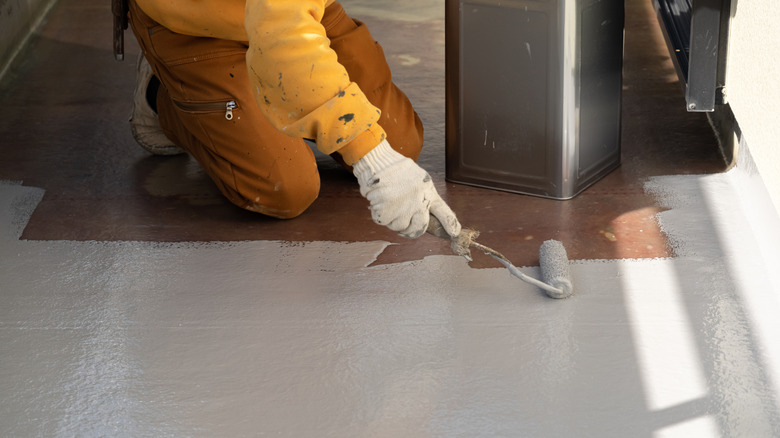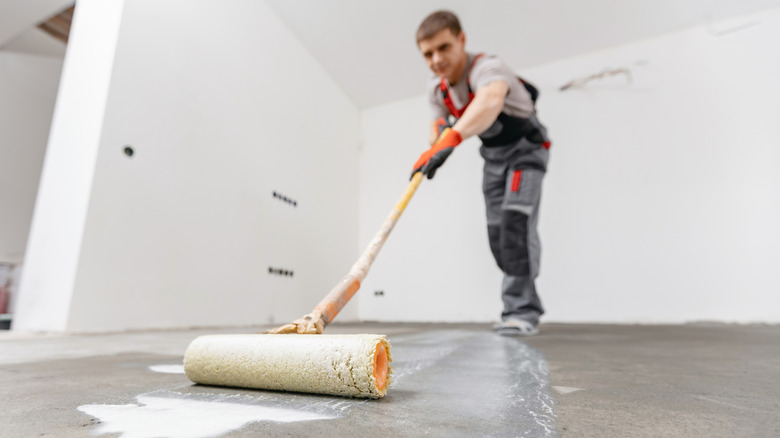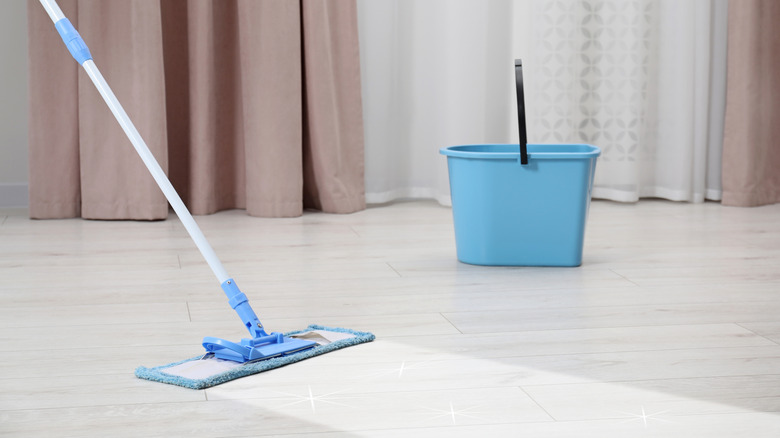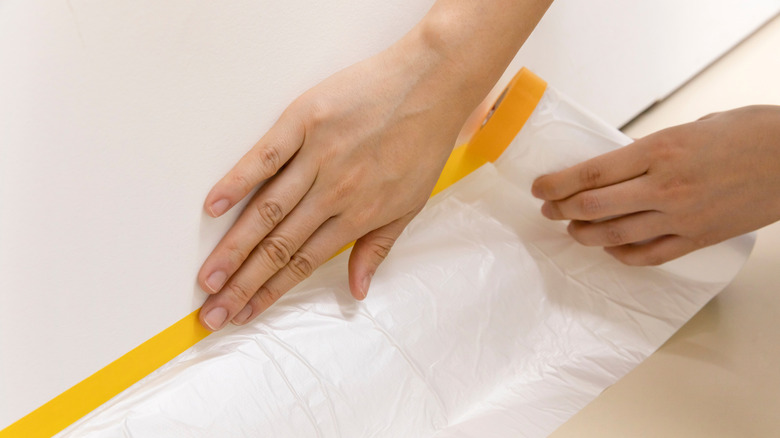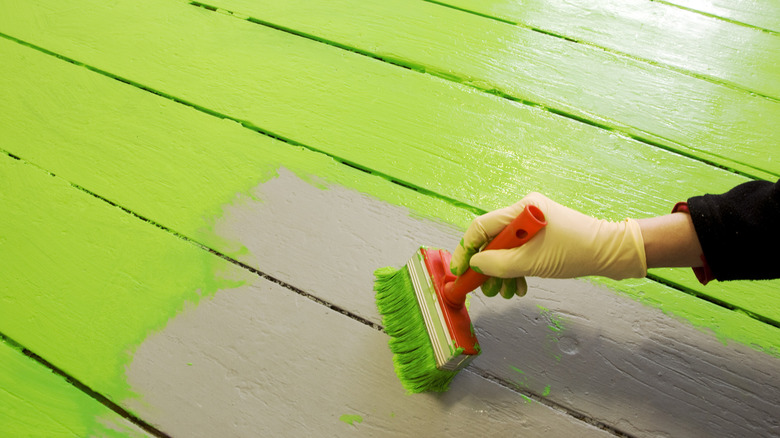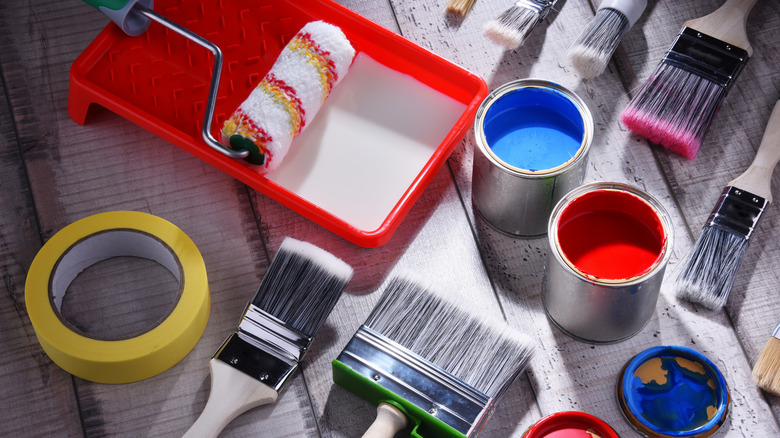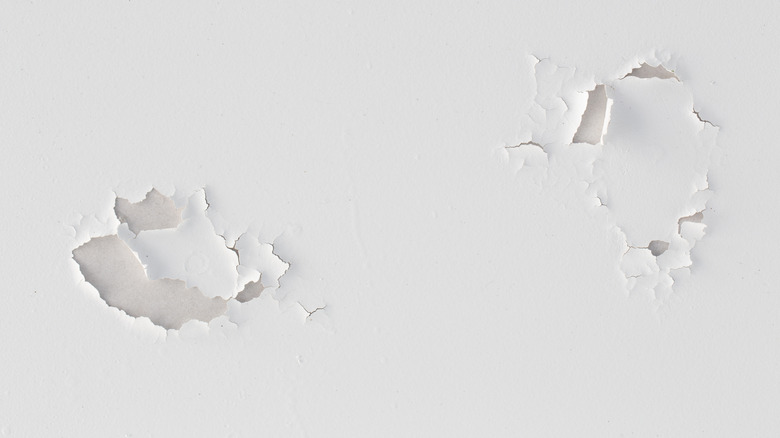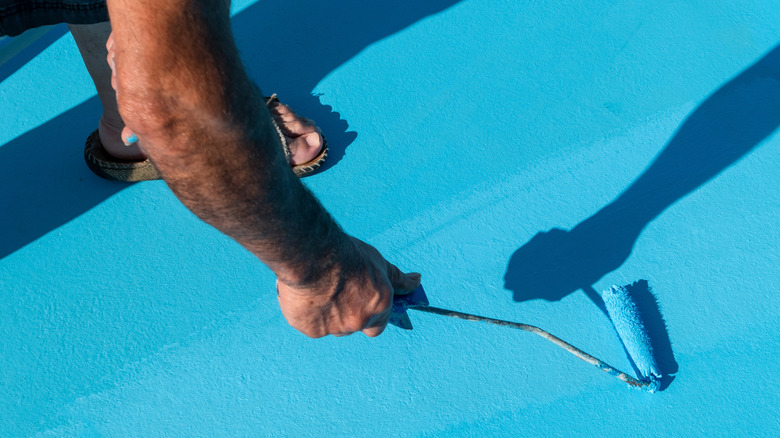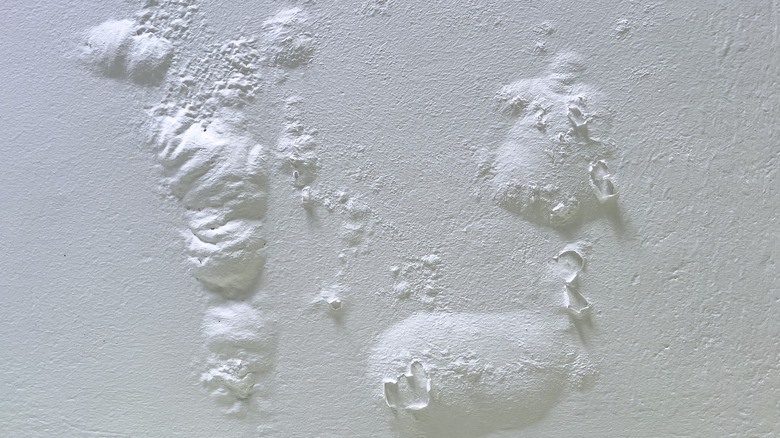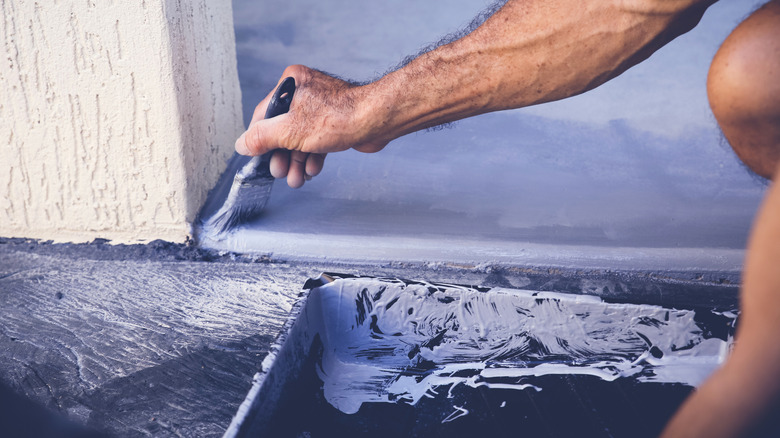9 Mistakes Everyone Makes When Painting Floors (& How To Avoid Them)
It can be a fun DIY project to change up your interior by painting your floors. It's an excellent task to take on that can bring a new style and brighten up your room. However, it's important you are aware of the pitfalls that can occur before taking on this new and popular flooring trend. Mistakes that everyone makes when painting floors include applying coats too thickly, painting in temperatures that aren't conducive to helping the paint dry correctly, ignoring debris or dust on the floors, and using low quality paints and tools.
Depending on the type of floor you're painting, there may be other factors to take into consideration. For instance, when painting concrete floors, you want to watch out for chips, cracks, and uneven spots. If you're painting in your basement, you should be aware of moisture and dampness that can impede your painting project. It's also not very advisable to paint wood floors because of how high maintenance painted wood floors tend to be, so consider other solutions. To be prepared, here are nine mistakes everyone makes when painting floors, and more importantly, what you can do to avoid them.
Forgetting to prep the floor
It's a critical step to first review the entire flooring surface before painting your floors. You need to check for things like uneven surfaces, cracks or dips. You must then address these issues, by either sanding the floor or priming it with epoxy to ensure you're working on a flat and even surface that doesn't cause the paint to pool in certain areas. If you're unable to DIY a fix, enlist the assistance of a professional to assess and level the flooring properly.
Skipping the cleaning and preparation
Don't make the mistake of forgetting to clean up the floors before you paint. It's best if you get as much debris and dust off of the surface so things like hair and dirt don't get stuck in the paint. You should do a combination of sweeping, vacuuming, and mopping to make sure your floors are sparkling before a paint job. It can be easier and more effective to do the cleanup in sections.
Not protecting the rest of the room
It can be easy to think that you don't need to worry about the walls since you're painting the floor. But paint can splatter or you might accidentally brush up against something, possibly leading to spattering paint on your furniture, walls, and baseboards. It is better to avoid this situation entirely. Consider removing or protecting the molding around the flooring. You should also cover the walls and furniture with plastic and tape to prevent them from getting stained.
Choosing the wrong paint color for your floor
Painting your floors can be a reflection of your style or complement other elements in the room. But it's important to choose your color wisely. For example, something that looks good to you may not have the right effect on your floor. To avoid this mistake, you should consider aspects like the lighting in the room and the room's purpose. You might even want to take a small section and paint it first to see how it looks before doing the entire floor.
Purchasing low quality paint and tools
DIY work is usually cheaper in the long run than hiring a professional, but that doesn't mean you should buy only inexpensive tools for the job. When you use tools that aren't made of good quality, it compromises your overall work, making it look tacky. Cheaper paint brushes, for instance, can shed bristles that would end up in your paint and get stuck on the flooring. To avoid these problems, you should get a highly rated floor paint and good quality paint rollers, brushes, and other tools.
Painting in the wrong weather conditions
Temperature matters when you're painting, and this includes the weather outside as well as interior conditions. If it's a particularly rainy day, it can affect your painting. The moisture can make the paint feel more sticky, creating an uneven finish. On the other hand, cold temperatures can make paint more likely to peel or not cover your flooring evenly, and your brushes can struggle to work effectively in the cold. To avoid this, check weather times and choose a day with temperatures between 50 to 85 degrees Fahrenheit for painting.
Ignoring the drying and curing process
Waiting for paint to dry is tedious, and you may become impatient. But ignoring drying times and rushing the process can ruin your paint job. Not drying properly can cause scratches or scuffs, and you may end up needing to paint over it again. To avoid this, follow drying and curing times on your paints and finishes, and do not walk on or move furniture and other items onto the floor before it's completely ready, even between coats. You can test a small part of the floor first before using it to ensure it's safe.
Applying the paint too thick
It can be easy to think when painting your floor that thicker is better, since it won't run like it would down a wall. However, applying thick coats can lead to clumps or bubbles that will blister and make your floor uneven. To avoid painting too thickly, follow the manufacturer's instructions on paint thickness per coat. You may also consider applying a few thin coats, and waiting a full day in between painting coats to keep the floor as even as possible.
Using incorrect painting techniques
Finally, you must remember not to skip out on utilizing good painting techniques. If you aren't careful when applying paint, you can end up with streaks or splotchy spots. Avoid this mistake by painting in shorter and smaller spots at a time, starting at the top or edge of your section and brushing across in even strokes. The goal is to get straight and even layers from start to finish.
